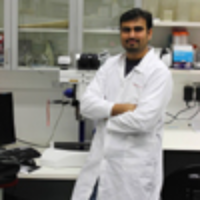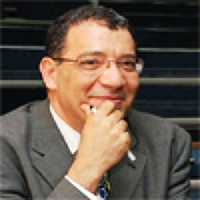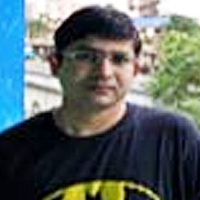Pseudocalcinosis Tumorale (Teutschlander Disease) in Chronic Hemodialysis Patients
Published on: 24th October, 2024
Pseudotumoral calcinosis (CPT) is a condition characterized by the deposition of calcium phosphate crystals in the periarticular tissues, forming large calcified masses. Although the pathophysiology of CPT is not fully understood, an increase in the calcium-phosphate product beyond the precipitation threshold and severe hyperparathyroidism appear to play a significant role. Treatment remains controversial, with surgical excision often recommended. We report a case of CPT in a 74-year-old diabetic patient undergoing chronic hemodialysis who experienced progressively worsening pain in the left hip for six months, along with mobility difficulties. A CT scan revealed a calcified mass on the posterior thigh, likely explaining the electric shock-like pain, as well as compression of the superficial femoral artery causing decubitus pain resembling critical limb ischemia. The biological assessment showed elevated calcium-phosphate levels and hyperparathyroidism. Surgical excision is not indicated due to the mass’s proximity to vascular and nerve structures. This case highlights the diagnostic and therapeutic challenges of CPT, emphasizing the need for iterative angioplasties, considering that this condition is rare in chronic hemodialysis patients with calcified periarticular masses.
Unlocking the Potential of Multigene Parallel Sequencing: A Concomitant Germline RET and BRCA1 Mutation in a Hereditary Medullary Thyroid Carcinoma
Published on: 11th November, 2024
Two Endocrine Disorders, One Postpartum Period: “The Coexistence of Thyroiditis and Hypophysitis,” A Case Report
Published on: 24th December, 2024
The postpartum period is a phase during which various endocrine disorders may arise due to changes in the immune system. Postpartum thyroiditis and postpartum hypophysitis (lymphocytic hypophysitis) are two autoimmune diseases that typically occur independently but are rarely found together in the same patient.Postpartum thyroiditis usually starts with thyrotoxicosis and progresses to hypothyroidism, while postpartum hypophysitis can lead to adrenal insufficiency and dysfunction of other pituitary hormones.This case report discusses a female patient who presented with severe headaches, fatigue, and hypotension five months after childbirth. The patient was diagnosed with both postpartum thyroiditis and postpartum hypophysitis simultaneously, and dysfunction of both the thyroid and pituitary was detected. Hormone replacement therapies were administered, and the patient’s symptoms were brought under control.This case emphasizes the importance of carefully evaluating both thyroid and pituitary function during the postpartum period. Early diagnosis and appropriate treatment are crucial for preventing potential complications and improving long-term health outcomes.
A Case of Rapidly Progressive Renal Failure with Unearthed Amyloidosis
Published on: 4th February, 2025
Amyloidosis-associated kidney disease commonly manifests with chronic glomerular symptoms including heavy proteinuria predominantly albuminuria. Clinical presentation ranges from full-blown nephrotic syndrome, hematuria, and hypertension to renal failure. In India patients with chronic kidney disease are mainly attributed to hypertension and diabetes but an underlying etiology such as amyloidosis needs to be unearthed and shouldn’t be ignored as an etiology. We report a case of a 60-year-old man with hypertension and hypothyroidism who presented with frothy urine for several years, b/l pedal edema for 15 days. Over the past 3 months, there was a serial increase in creatinine. As per CKD-EPI equation, the patient was CKD-4. As the patient was suspected to be rapidly progressive renal failure; a renal biopsy was planned. Biopsy reports were suggestive of Amyloidosis. Glomerular, vascular, and tubulointerstitial deposition of amyloid was seen. Based on renal biopsy and IHC staining; the patient’s diagnosis was AA-associated secondary renal amyloidosis. Thus in this case renal amyloidosis was an unearthed etiology.
Browse by Subjects
Biology Group Journals
Chemistry Group Journals
Clinical Group Journals
- Archives of Food and Nutritional Science
- Annals of Dermatological Research
- International Journal of Clinical Microbiology and Biochemical Technology
- Journal of Advanced Pediatrics and Child Health
- Journal of Pulmonology and Respiratory Research
- Insights in Clinical and Cellular Immunology
- International Journal of Clinical Anesthesia and Research
- Journal of Clinical Intensive Care and Medicine
- Journal of Clinical, Medical and Experimental Images
- Journal of Neuroscience and Neurological Disorders
- Insights in Veterinary Science
- Archives of Asthma, Allergy and Immunology
- Journal of Child, Adult Vaccines and Immunology
- Archives of Cancer Science and Therapy
- Clinical Journal of Nursing Care and Practice
- Annals of Clinical Gastroenterology and Hepatology
- Journal of Hematology and Clinical Research
- Archives of Pathology and Clinical Research
- Annals of Clinical Hypertension
- Journal of Oral Health and Craniofacial Science
- International Journal of Clinical and Experimental Ophthalmology
- Journal of Radiology and Oncology
- Archives of Clinical and Experimental Orthopaedics
- International Journal of Bone Marrow Research
- International Journal of Clinical Virology
- New Insights in Obesity: Genetics and Beyond
- Advanced Treatments in ENT Disorders
- Journal of Clinical Advances in Dentistry
- Insights on the Depression and Anxiety
- Heighpubs Otolaryngology and Rhinology
- Clinical Journal of Obstetrics and Gynecology
- Archives of Surgery and Clinical Research




